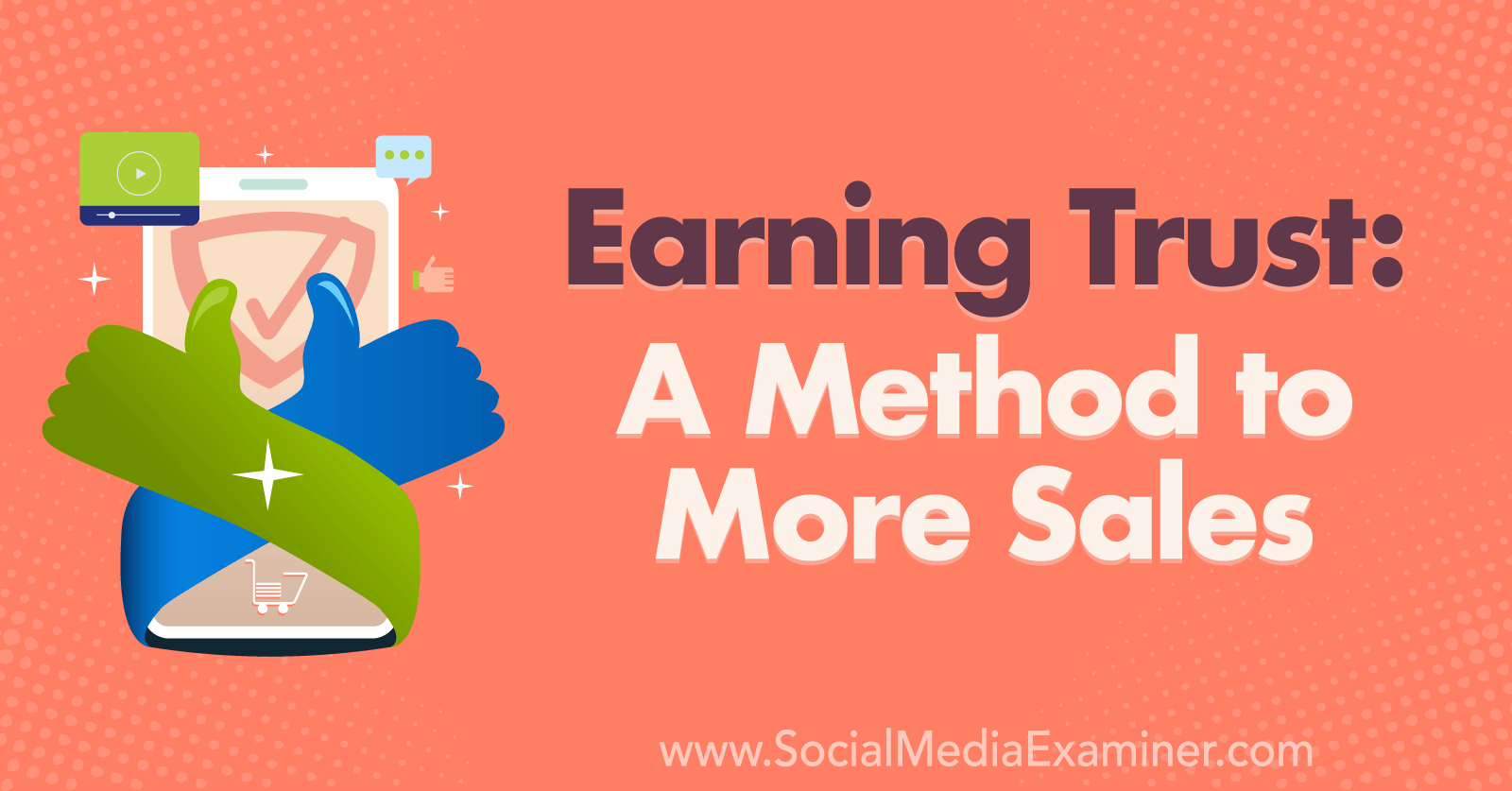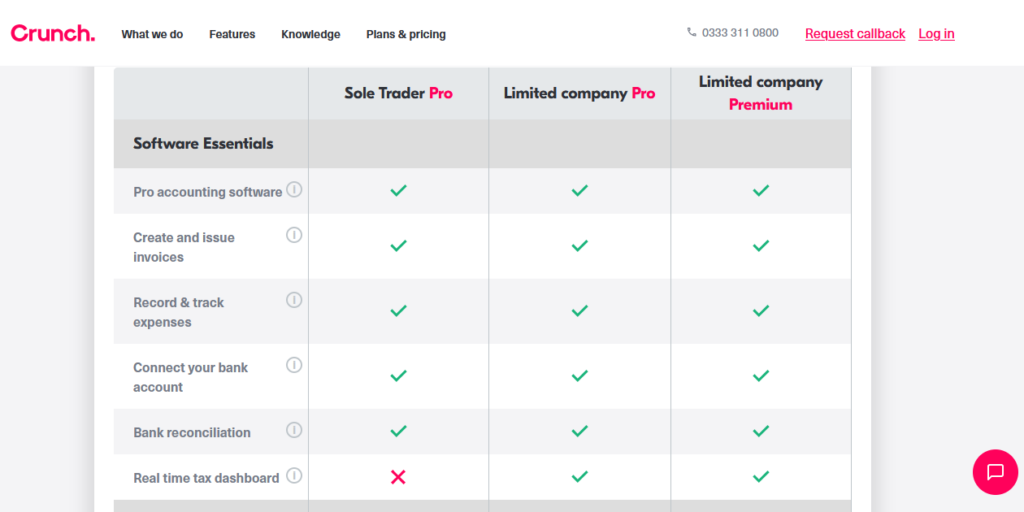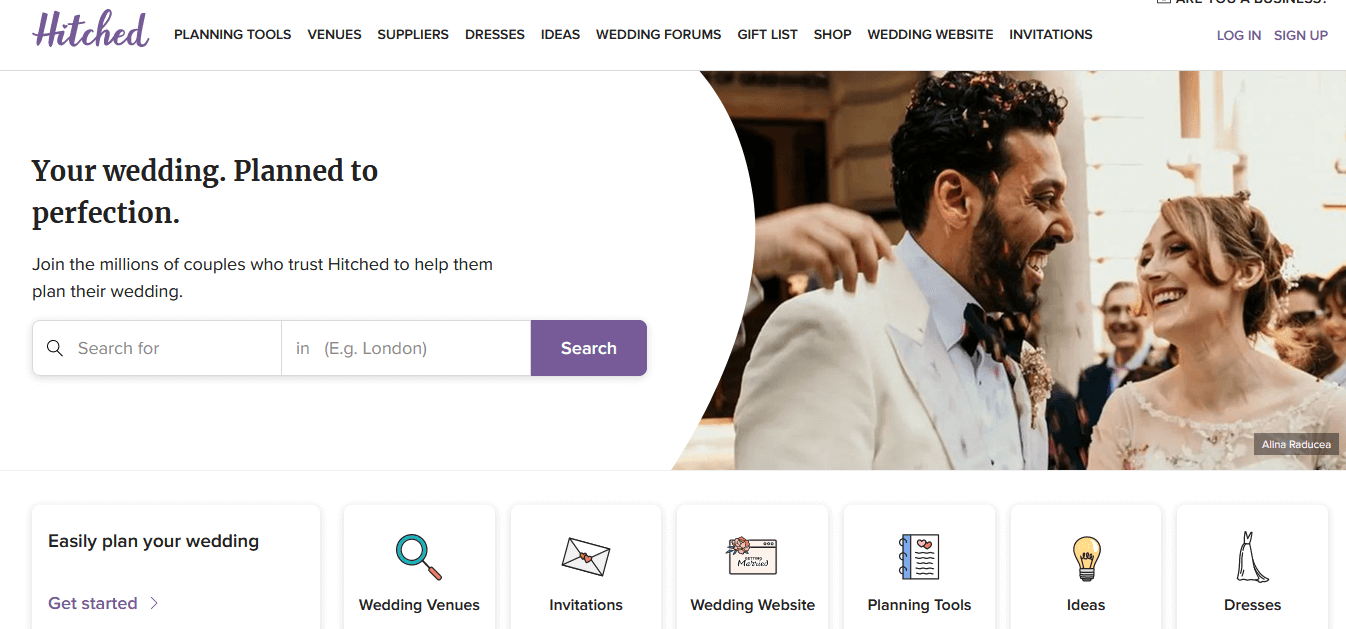Wish more people trusted your business? Looking for a content marketing model that helps establish trust?
In this article, you’ll discover how to combine three kinds of content to earn and sustain a trusted relationship with today’s marketplace.

Why Trust Matters for Marketing
You can’t achieve anything as a brand, marketer, entrepreneur, or salesperson without trust.
Trust is what persuades someone to download a lead magnet, pick up a sales call, or buy a product. Trust is what motivates customer loyalty. Trust is what makes people recommend your business to their friends, family, and colleagues.
Trust in businesses has been seriously eroded over the past few years. In fact, American consumers are in a crisis of trust.
- We’re bombarded with more spam emails, robocalls, and online scams than ever before.
- Events and products championed by influencers have repeatedly fallen flat. Remember the infamous Fyre Festival?
- Less than 5% of consumers say that they believe marketers practice with integrity.
- Our social media feeds are flooded with ads and sponsored content, vastly outweighing posts from people we know in person.
That’s a big problem for businesses. To take a chance on your brand, customers have to know, like, and trust you. Brands are failing on the final step.
So how can you start rebuilding trust—especially in such a crowded, noisy marketplace?
You can prove your integrity and honesty through quality content. It’s called the “Prove-It” Method.
What Is the Prove It Method for Marketing?
The Prove It Method is a simple strategy for marketers.
You offer great customer service? Prove it!
Your products are the best on the market? Prove it!
You’re a green, sustainable, socially conscious startup? Prove it!
Whenever you make any kind of claim about your business, you should be prepared to back it up with proof.
This changes how you create content from the ground up. Instead of posting what people want to hear, you’re only going to post content that’s definitively, demonstrably correct.
Get World-Class Marketing Training — All Year Long!
Are you facing doubt, uncertainty, or overwhelm? The Social Media Marketing Society can help.
Each month, you’ll receive training from trusted marketing experts, covering everything from AI to organic social marketing. When you join, you’ll also get immediate access to:
- A library of 100+ marketing trainings
- A community of like-minded marketers
- Monthly online community meetups
- Relevant news and trends updates
There are three steps to the Prove-It Method:
- Decide which claims are the right ones to reach your target audience and objectives. There’s no point in creating proof for something that your customers don’t care about.
- Audit your existing content for accuracy and proof. As part of building trust with consumers, you need to make sure that your content is consistently reliable, even if that means deleting or reworking previously successful posts.
- Start creating content that offers proof through corroboration, documentation, and education.
Let’s take a closer look at the types of content you can use as proof: corroboration, documentation, and education. For each type, you’ll need to create high-quality content if you want to stand out from the crowd and build lasting trust.
#1: Corroboration
Corroboration means finding people who’ll agree with your marketing claims. If you claim to have the best products, lowest prices, or most innovative features, they’ll agree with you!
There are two types of corroborators you can use in your content:
- Experts. Find industry experts or academic authorities who’ll support your claims. You could ask them to share a quote, make an official endorsement of your product, or use their influence through their own social media channels. Expert corroboration is the best strategy if you’re trying to promote information such as details about product features.
- Witnesses. Witnesses are people who’ve seen the truth of your claims firsthand. They could be clients, customers, or even employees! Ask them to share their experiences through testimonials, reviews, or a “day in the life.” Witness corroboration is the best strategy if you’re trying to sell an experience.

Although the two types of corroboration have different strengths, they’re both generally helpful for your marketing strategy. If you want to get expert corroboration but the only corroboration you have for now is reviews from witnesses, use those reviews! All corroboration can be valuable.
Once you have those quotes, stories, and testimonials, you can share them in any format that works for your audience. Think website copy, social media posts, white papers, eBooks, printed books, videos… however your target audience prefers to consume information.
Traditionally, B2B companies have been proficient at offering both expert and witness corroboration. They often share reviews, publish statistics, and perform their own research studies.
But there are lots of opportunities for B2C companies here, too. Industries with a lot of regulation like beauty and healthcare can benefit from building consumer trust. Expert testimony shows that your products can be relied on and witness corroboration can support your claims with social proof.
Ritual, a direct-to-consumer vitamin brand, published its own clinical study as expert corroboration.

The corroboration method relies on finding experts and witnesses who your audience will trust. If you’re not sure who that is, ask your customers! A few quick surveys or focus groups can go a long way toward figuring out what kind of corroboration you need.
#2: Documentation
Documentation is our second type of proof in content marketing.
Think of it like this: corroboration is where you get a third party—an expert or witness—to confirm your marketing claims. Documentation is about offering primary sources of evidence. Prospects can see the proof and assess its value for themselves.
There are two broad categories of documentation:
- Stories. Tell a story that illustrates your marketing claims. Instead of just asserting facts and figures, create a story with its own emotional arc. For example, if you sell fair trade products, you could have a farmer tell the story of how fair prices have helped their business and community. You can tell stories from customers, vendors, employees, suppliers, or anyone else with a connection to your business! Note that stories are different from simple witness corroboration because they show a process: how life was changed or improved by your brand.
Productivity tool Notion uses stories and case studies as documentation on its website.

- Documentation. You can also show the process or story of your impact through more factual kinds of documentation. Think side-by-side comparisons, diagrams, explainer videos, audit results, statistics, certifications, awards, case studies, or even checkbox matrices! With this kind of documentation, you effectively do the audience’s homework for them, presenting key evidence in the most convenient format possible.
Accounting company Crunch uses checkbox matrices to help buyers choose a pricing plan.

Discover Proven Marketing Strategies and Tips
Want to go even deeper with your marketing? Check out the Social Media Marketing Podcast! Publishing weekly since 2012, the Social Media Marketing Podcast helps you navigate the constantly changing marketing jungle, with expert interviews from marketing pros.
But don’t let the name fool you. This show is about a lot more than just social media marketing. With over 600 episodes and millions of downloads each year, this show has been a trusted source for marketers for well over a decade.

One very powerful way to collect stories is through user-generated content (UGC) on social media. You can run active campaigns to collect UGC by offering rewards and perks but you may also find that people post stories about your brand spontaneously. When they do, get in touch and get permission to use that content as proof in your content marketing strategy.
For example, at Social Media Examiner, we ran a contest for videos recorded by attendees at the Social Media Marketing World conference. It now has pride of place on the website!
If you set up or film more structured interviews, you’ll need to get in touch with your journalistic side. Remember that in the process of telling a story, people may have to revisit negative or difficult moments. Ask open questions without putting pressure on them to react a certain way. Try using phrases like…
- “Talk to me about what it was like when…”
- “Can you share more about…”
- “Tell me a story about a time…”
#3: Education
Education is the third and final type of proof in your content marketing strategy.
- Corroboration was about getting third-party evidence of your claims.
- Documentation was about providing your own evidence.
- Education is about helping your audience to find proof for themselves by experiencing your brand and the expertise you have to share.
The goal of educational proof is to let people experience your claims for themselves. There are two ways you can do this: by providing valuable information for your customers and coaching them through challenging tasks or situations.
- Information. If you work in a specialized industry or one where most customers are first-time buyers, your audience may just not have the knowledge to make purchase decisions. So it’s your job to support them with information and advice. This is also a valuable strategy whenever the buyer isn’t your end user. For example, if you sell cybersecurity systems to companies, the person making the purchase is probably not the same person who’ll have to run the security system. You need to empower the buyer by giving them information that they can share with others.
- Coaching. Coaching is a more hands-on approach to providing information. It includes things like step-by-step guides, tutorials, templates, free audits, or taster experiences. This type of content guides your audience through a new task or experience while showing off your expertise. For example, many wedding websites offer free planning templates and checklists to support their audience.
Wedding websites like Hitched often offer free templates and checklists for their audience to use.

If you sell products, then information can help buyers make difficult decisions. If you sell services, coaching can help you in two ways: by building trust generally and in some cases showing the buyer that they want to hire a professional to navigate the challenge for them.
You don’t need to exaggerate how difficult something is, you just need to prove that you understand the situation inside out and have all of the information your customers need. Don’t worry if some people just take the free guides and run. They would never have purchased from you anyway. With coaching proof, you’re focusing on the customers who want your services and guidance from the beginning.
Your sales and customer service teams are a valuable source of information about what kinds of educational content you need. Ask…
- What makes people hesitate before a purchase?
- What are the most common questions people ask you?
- What do people often misunderstand about our business?
- What do people object to about our business?
The answers to these questions are all problems you can solve with education and trust.
When to Use Each Type of Content
We’ve seen how corroboration, documentation, and education can all help build trust with your audience by providing real proof of your marketing claims.
But does that mean you have to monitor every scrap of content for all of these elements, all the time?
Of course not! Depending on your industry, audience, and how your business is growing, different types of proof will be useful at different times. For example, when you’re just starting out, customer reviews can have a huge impact. If you’re trying to boost sales for a new product release, then you might focus on education for a while, and so on.
You’ll also find that different customer segments have different needs when it comes to proof. Educational content can be powerful for people at the top of the marketing funnel; then, as leads progress toward a sale, they become more interested in documentation and corroboration.
Whichever type of proof you’re focusing on right now, know that the Prove It Method is a content strategy that takes time. It’ll take time to figure out what proof you need, find the right experts and witnesses, and create impressive documentation and coaching tools.
But that time is more than worth it. While we navigate the crisis in consumer trust, creating high-quality content is what will set you apart from the competition.
Melanie Deziel is author of The Content Fuel Framework and co-founder of The Convoy, a B2B marketplace that helps small businesses save money through aggregated buying power. Her latest book is called Prove It: Exactly How Modern Marketers Earn Trust. Find her on Twitter @mdeziel.
Other Notes From This Episode
- Connect with Michael Stelzner @Stelzner on Instagram and @Mike_Stelzner on Twitter.
- Watch this interview and other exclusive content from Social Media Examiner on YouTube.
Listen to the Podcast Now
This article is sourced from the Social Media Marketing Podcast, a top marketing podcast. Listen or subscribe below.
Where to subscribe: Apple Podcasts | Spotify | YouTube Music | YouTube | Amazon Music | RSS
✋🏽 If you enjoyed this episode of the Social Media Marketing podcast, please head over to Apple Podcasts, leave a rating, write a review, and subscribe.
Stay Up-to-Date: Get New Marketing Articles Delivered to You!
Don't miss out on upcoming social media marketing insights and strategies! Sign up to receive notifications when we publish new articles on Social Media Examiner. Our expertly crafted content will help you stay ahead of the curve and drive results for your business. Click the link below to sign up now and receive our annual report!
Attention Agency Owners, Brand Marketers, and Consultants

Introducing the Marketing Agency Show–our newest podcast designed to explore the struggles of agency marketers.
Join show host and agency owner, Brooke Sellas, as she interviews agency marketers and digs deep into their biggest challenges. Explore topics like navigating rough economic times, leveraging AI, service diversification, client acquisition, and much more.
Just pull up your favorite podcast app, search for Marketing Agency Show and start listening. Or click the button below for more information.

